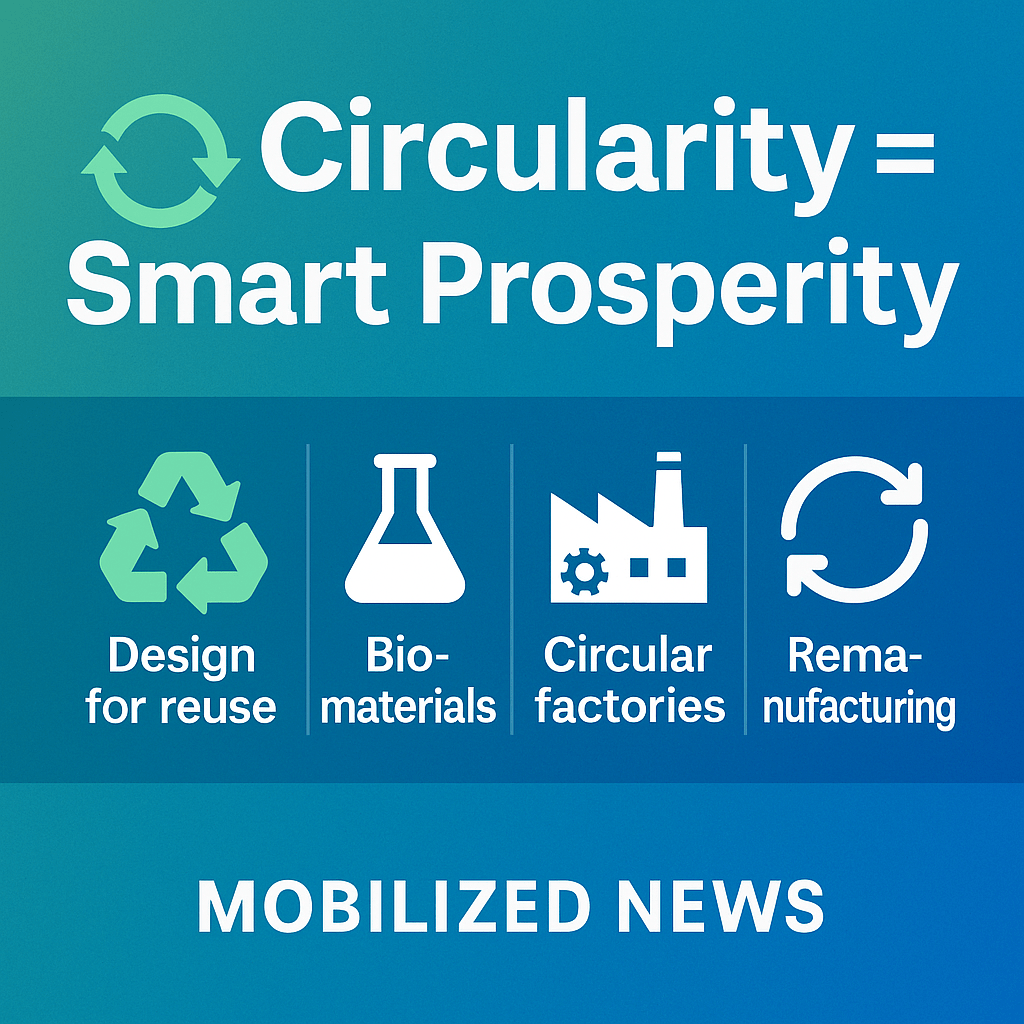 Updates: Late September, 2025
Updates: Late September, 2025
September Circularity Snapshot
What’s New
- Automotive waste gets new life.
BASF, Porsche, and BEST completed a pilot: chemical recycling + gasification of mixed end-of-life vehicle waste converts plastics and foams into raw materials for new steering wheel components. (BASF) - Europe launches new raw materials push.
The European Commission opened a second call for strategic projects to secure critical raw materials — including recycling, refining, and sustainable processing. (Internal Market SMEs) - Canada’s recycling rules tighten.
In Ontario, Circular Materials is gearing up to launch a unified material recycling list (including new types like coffee cups) in 2026. (Circular Materials) - Policy & procurement go circular.
- Maine is preparing to publish a packaging material list under its extended producer responsibility (EPR) law — defining what counts as recyclable, compostable, reusable. (Sustainable Packaging Coalition)
R&D opening closes soon.
The Eureka Network’s “Circular Value Creation” call for international R&D collaborations closes 30 Sept — for projects reimagining production, reuse, and materials cycles. (Eureka Network)
- Tech & materials joining in.
- Tech waste is under pressure: circular recycling in ICT is spotlighted as e-waste volumes rise. (Industry Today)
- Adidas, Target, others exploring bioplastics in shoes as part of circular supply chain strategies. (Trellis)
- Honda opened a circularity center in Ohio to reuse / recycle factory parts and packaging. (Trellis)
⚙️ System Upgrades & Trends
| Area | Upgrade / Shift | Why It Matters |
|---|---|---|
| Advanced recycling | Chemical recycling + gasification for complex waste | Moves beyond mechanical recycling limits — opens access to “hard to recycle” streams |
| Raw materials & resilience | EU’s call to recycle, process, secure critical minerals | Reduces dependency on imports, strengthens circular supply chains |
| Standardization & regulation | Unified materials lists, EPR rules | Harmonizes definitions and incentives for reuse, recycling |
| Circular procurement & operations | Companies adopting reuse, repair, refurbish strategies | Embeds circularity into business models, not add-on |
| Cross-sector integration | Materials + tech + manufacturing converge | Circular practices spreading from core sectors into tech, consumer goods, logistics |
Takeaway & What to Watch
September showed a clear shift: the circular economy is moving from theory into hard infrastructure and rules.
- The bottlenecks (complex waste streams, mixed materials) are being addressed via chemical recycling and gasification.
- Policy levers (EPR, unified lists, procurement rules) are aligning to push organizations toward circular modes.
- Cross-industry collaborations (auto, tech, manufacturing) signal that circularity is no longer niche — it’s becoming a baseline expectation.
Keep your eyes on:
- Which pilot recycling processes scale to commercial use
- How new EPR rules get implemented and enforced
- New projects selected under the EU raw materials call
- Corporate adoption of circular operations in traditionally linear sectors
- The pace of circular tech and material convergence (e.g. bioplastics, remanufacturing)
